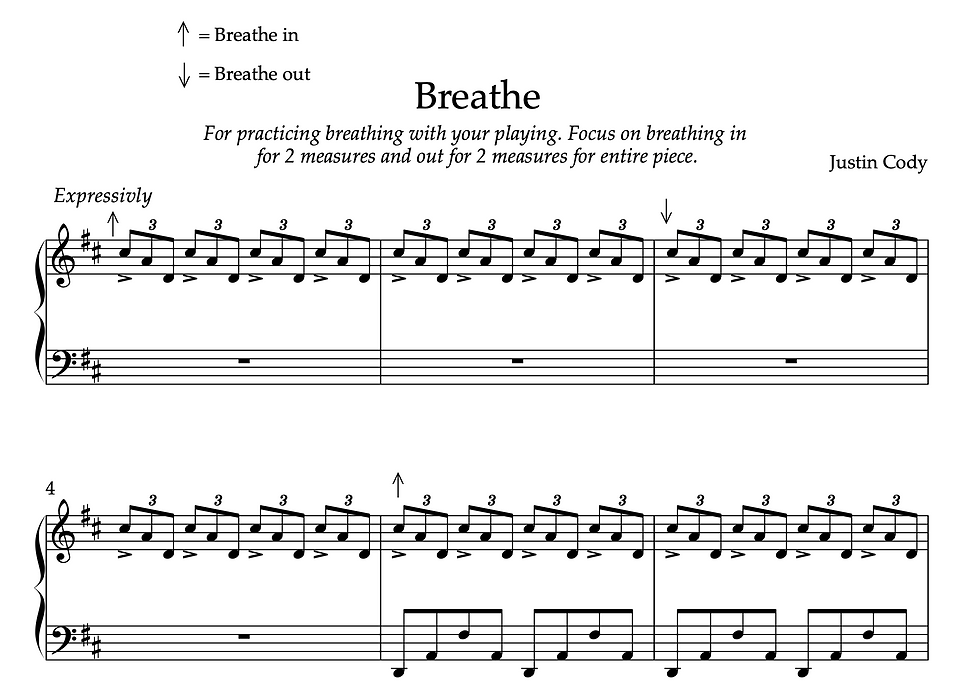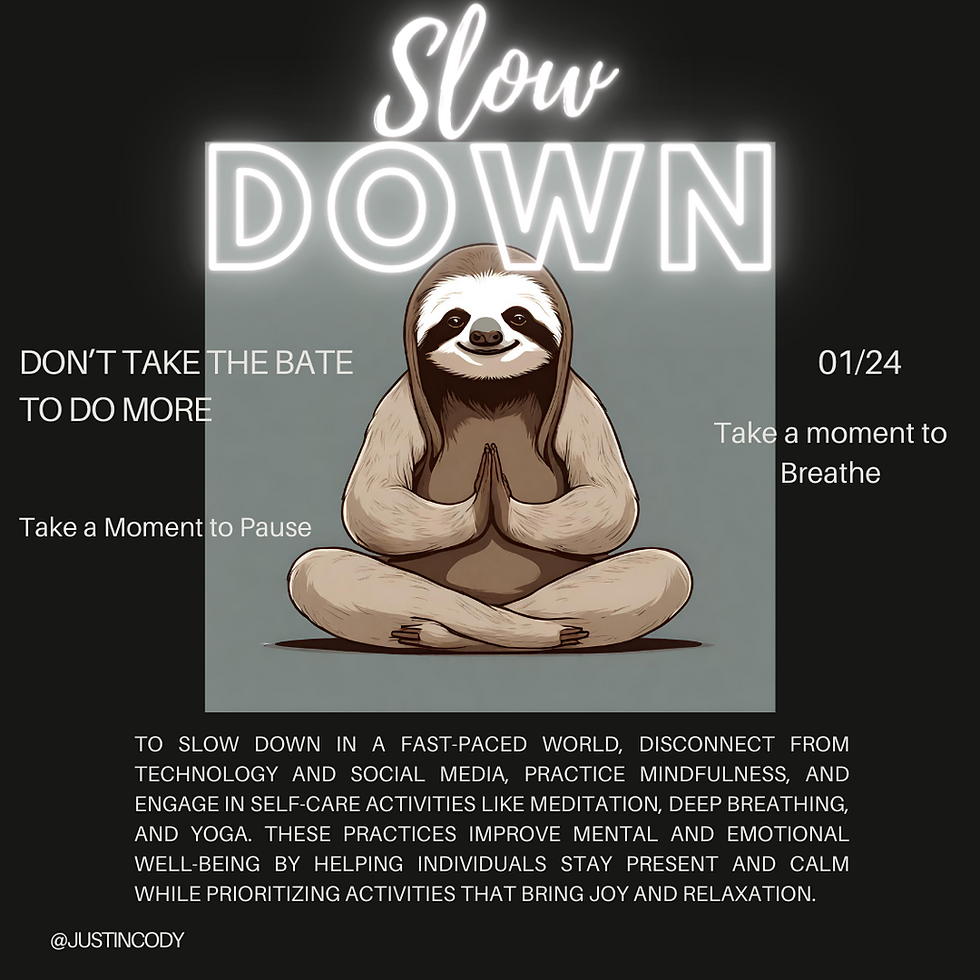Breathe
- Justin Cody
- Apr 21, 2022
- 2 min read

When I began writing Breathe, I was learning how to connect my breath to movement while practicing Yoga with Adrienne's 30 day yoga journey (https://www.youtube.com/watch?v=JpWa4LtKe4c). I was fascinated by how she seemingly slowed the world down for me by asking me to focus on the in and out breath while going through the movements. I was drawn to this meditative practice and was compelled to put this into practice at the piano. I've always been into connecting breath to music, but this was in a different and more intentional way. I've always felt that pianists should have more training on connecting their breath to playing. It is too easy for pianists to miss the connection between playing and breath. This idea came to me of creating a technical exercise for the pianist where not only is the music notated, but the breath as well in a way that teaches you how to use your breath to enhance the music you are playing.

I was inspired by this 2 against 3 polyrhythm and how that connects with breath. Despite being a technical exercise, I wanted to create something beautiful that makes you want to come back to it as meditative practice, but that at the same time was a challenge to master. It's kind of the opposite of breath work meditation. Instead of trying to clear your mind and focus on the breath, you are asked to play complex rhythmic patterns in a very expressive way while at the same time focusing your breath on a consistent pattern that flows with the music, integrating the breath with the physicality and artistry of the practice. Half way through the piece, the poly rhythms jump up an octave and reverse hands in order to cause potential mind confusion that makes it more difficult to keep focus on the breath. Think about that pat your head and rub your belly scenario type of switch up.

Towards the end, a series of double whole note chords appear that are building intensity in moments of inhale and exhale, tension and release. The first four outline the harmony from the beginning, while the second four sort of invert the inner voices and create tension by inverting the major 7th interval to a flat 9th. After these long chords, there is an arpeggiated chord that outlines all the notes in the D major scale, but does so in such an open way that it feels more melodic than scale based. In the last line, there is a final exhalation with dramatic low octaves and high intervals that if followed closely, gives an immense sense of release and resolution.






Comments